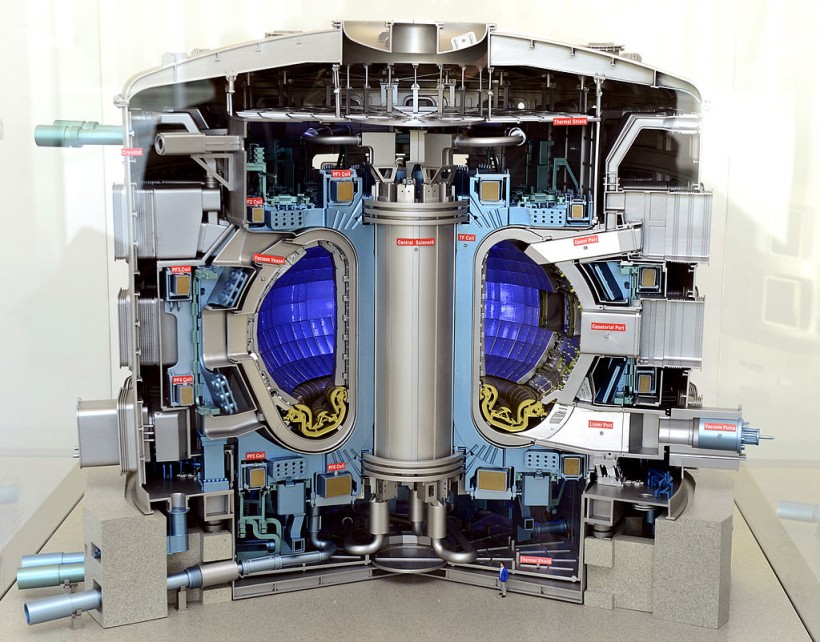Scientists have been attempting to develop a viable nuclear fusion reactor to create a clean and virtually limitless power source that could answer the energy problems of nations as they try to stop using fossil fuels. Now, a key component of the largest artificial sun has been manufactured in China and will make a breakthrough in the project as it nears completion.
The nuclear reactor is called the International Thermonuclear Experimental Reactor (ITER), which is currently under construction in France and will significantly outsize the largest experimental fusion reactor currently in operation. ITER is estimated to weigh around 23,000 tons and stand at nearly 30 meters tall once completed.

Picture taken on January 17, 2013 in Saint-Paul-les-Durance, southern France shows the model of the reactor of the future International Thermonuclear Experimental Reactor (ITER) .
Current Progress of ITER
Huge experimental reactors that are as big as stadiums were designed and constructed at various sites around the world, which also cost a lot of money. However, producing fusion power was incredibly slow and research into fusion only began in the 1940s.
Per Newsweek, the ITER project based in Cadarache in southern France is an unprecedented international collaboration of 35 nations, including the US, China, the UK, Switzerland, India, Japan, the Republic of Korea, Russia, and 27 countries in the European Union. Europe is responsible for most of the construction costs, which is about 45% while other nations each contribute 9%.
Aside from providing funding, member countries deliver completed components, and systems or build infrastructure, like the case of China's latest manufacturing milestone. Chinese state media reported last week that the manufacturing of a full-size prototype of a component called enhanced-heat-flux (EHF) first wall (FW) panel had been completed and that it met the requirements.
ITER is a fusion reactor that is also a tokamak or an experimental device that employs powerful magnetic fields to continue and control plasma, as well as harness energy generated by the nuclear fusion reactions in the doughnut-shaped vacuum chamber.
When the reactor becomes operational, the plasma housed inside the chamber will be heated up to 150 million degrees Celsius, which is 10 times hotter than the Sun, and the EHF FW should be able to withstand these temperatures.
Scientists estimate that the ITER will be the largest tokamak and will be capable of holding 10 times the plasma volume compared to other fusion reactors in operation today.
READ ALSO: Fusion Energy Gives Off Spaghetti-Like Powers as Tokamaks Get Hotter
Delays in the Making of ITER
As Newsweek reported, the $22 billion project has been delayed multiple times and its spiraling costs could push back its estimated operation schedule in 2025. Earlier this year, Physics Today reports that new troubles are causing delays in the massive international fusion experiment.
France's Nuclear Authority (ASN) ordered a halt for the assembly of ITER to vacuum vessels due to the misalignments between the welding surfaces of the first two 440-ton stainless steel vessel sections. The pair had been damaged in transit from South Korea where the components were built.
Furthermore, ASN told the ITER Organization that the two-meter-thick concrete radiological shielding that is to be installed around the reactor is not enough to protect the personnel once the experimental reactor becomes operational in 2025. ASN said that any increase to the shielding could cause additional weight to the reactor and could exceed its maximum capacity.
These issues need to be addressed to ensure that ITER will work properly when the time comes. But the European Commission now estimates that the delays will likely push back the official completion date by 17 months.
RELATED ARTICLE: Project ITER Paves the Way for the Future of Nuclear Energy
Check out more news and information on Nuclear Power on Science Times.














